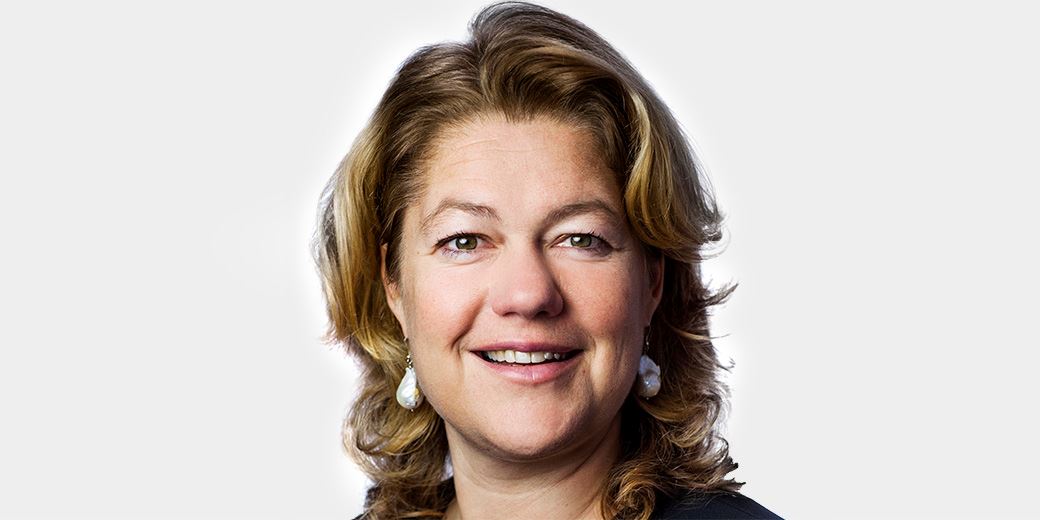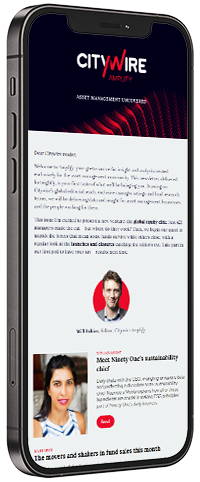There might be light at the end of the tunnel, but it ain’t here yet.
Robeco ESG head: ‘Ideally, my role would cease to exist’

Latest Newsletter
Value stance rewards managers with first AAA rating
The year comes to a close with a host of managers gaining their AAA wings.
Real Life: A cheaper, smarter way to fly business to the US
Companies are clamping down on travel costs. Here’s how to travel in comfort while keeping the expenses department happy.
Community
With the number of sustainability roles created in the past few years, it’s odd to think their mission should be to put themselves out of a job. But that’s exactly how Robeco’s Masja Zandbergen sees it.
Of course, there is no fear of that happening any time soon. Regulators, lawmakers and indeed other asset managers are ensuring that even if everyone in an organisation perfectly understood and integrated current ESG practices, the whole feast would have already moved on.
But Zandbergen’s job is also about accountability, and she has the backing of Robeco’s chief investment officer (CIO) to help ensure teams deliver on her goals.
What is the purpose of the head of sustainability integration at Robeco?
If sustainability is integrated, you would not have a need for such a role. At Robeco, we’ve been integrating financially material ESG issues in our investment processes since 2010. We need to make sure we do this in a consistent and high-quality way. It’s also important we continuously develop our approach and our methodology. I manage that process.
How are you delivering that?
I do a formal quality control on all the investment teams. I review their investment cases, I review their integration approach and I score the teams according to our quality-control framework. These results are then discussed with the investment teams, and with our CIO. Once a year, together, we define areas for improvement. These are translated into our sustainable investment strategy, and into the KPIs of the investment teams. This year, we identified some areas for improvement.
First of all, we want the teams to score higher on the quality assessments. We want them to improve every year. We also do a lot of research into how sectors can decarbonise. We want the investment teams to integrate that into their investment cases.
Secondly, we are adding the concept of double materiality to our investment research. How can we integrate social and environmental materiality in a bottom-up way into our investment process?
How does the quality control framework that you mentioned work in practice?
I pick a random selection of investment research from our investment teams, and then I have a whole framework where I ask a number of questions: Is it complete? Have they identified and addressed all the red flags, for example, that come out of our sustainability research? Have they at least commented on three material sustainability issues? And have they thought about how that impacts the business model of the companies that they are looking at? In the end, is it a logical conclusion?
Then they can score points in each of those areas. Outcomes are kind of like a grade, per case, but also for the whole team. We have a scorecard for all teams.
How does your role fit into the organisation?
I always jokingly say that I’m head of sustainability integration but have no team. I am part of the SI Center of Expertise. We have 50 experts in sustainability. We are all part of the investment domain. I need to create influence by showing the investment teams that I have knowledge, expertise and experience in this area, and I also have the support of the CIO.
I am a member of the sustainability and impact strategy committee, which consists of members of the executive committee and other relevant departments like risk, operations, marketing and sales. This committee defines the sustainability investing strategy and advises the executive committee on sustainability issues.
Luckily, I have the support of these 50 people in this SI Center of Expertise, because sustainability has become so ingrained in everything that we do that I need the help of all of my colleagues. The research team provides the sustainability research for the investment teams, the active ownership team facilities the voting and engagements, and a thought leadership team creates new frameworks around the Sustainable Development Goals, climate and biodiversity.
You mentioned real-world impact and the difficulty of measuring that, especially when you’re investing in secondary markets. How do you do that?
One tool is active ownership, meaning engagement. Voting, engagement and using our power and influence as not only a shareholder but also as a bondholder, because they’re more linked to the issuance. We’ve been doing that since 2005 and we measure progress.
We can show that engagement has improved the practices of the companies we speak with. Not all of them, but in general. That’s an important tool to show that, as an investor, you care about these things from a value-creation perspective.
The second [tool is] measuring it. We say as investors we don’t create the impacts, but the companies that we invest in create the impact, and that is what we want to measure.
The more money flows to those companies, [the more] they have longer-term relationships with their investors, they have investors that understand what they’re doing, that are willing to look through an economic cycle. That’s important.
What is the main challenge that you’ve faced in your current role and how did you overcome it?
The main challenge is to keep everyone’s knowledge up to speed, because things are moving so fast, also for clients. And if people are joining, I have an ESG integration manual explaining why we do it and how we do it.
I need to connect the investment teams to their counterparts at the SI Center of Expertise. I need to make sure that they talk to each other and that knowledge is translated into the investment cases and the investment process, and to keep on training and coaching the teams. This topic has become so big that keeping up to date is the greatest challenge.
It’s no longer about ‘should we do this?’; it’s more about ‘how do we do it?’ Ideally, once sustainability has been integrated, in theory and in practice, my role would cease to exist, but we’re not there yet.
Zandbergen’s six-part sustainable investment strategy
- Make sure that we have the right product range in place to fulfil our clients’ financial goals and sustainability goals.
- Make sure we have high-quality proprietary sustainability research.
- Create real-world impacts. How do we measure that? We’re investing a lot of time and energy into understanding and measuring this.
- Build sustainability partnerships with clients, academics and international standards-setting boards. We’re at the forefront of establishing such partnerships, like the Net Zero Asset Managers initiative, of which we were a founding member.
- Licence to operate – making sure that we fulfil all the regulations, which is a difficult task, with the EU finance plan.
- Walking the talk. What we ask of companies that we invest in, we as Robeco must do too. For example, we’re implementing the decarbonisation pathway that we impose on our portfolio holdings.
Latest Newsletter
Amplify Issue 30: The fund groups topping the tree
We analyse which groups have had the biggest inflows and outflows in 2022, look at managers achieving their first AAA ratings, and hear from Rob Kyprianou on why regulation gets it back to front.
Amplify Issue 29: Red hot: 2022’s private market hiring spree
2022 has been a hot year for private markets, but are asset managers putting the brakes on their expansion efforts? Plus, we look at how the bear market has affected launches this year and look at how firms can better communicate their brand values.
Amplify Issue 28: Fill your ESG product gaps
We hear from fund buyers on what they’re looking for from an ESG fund, find out what Neuberger Berman is plotting in the alts world, and learn the winners of Citywire’s Gender Diversity Awards.
Community
